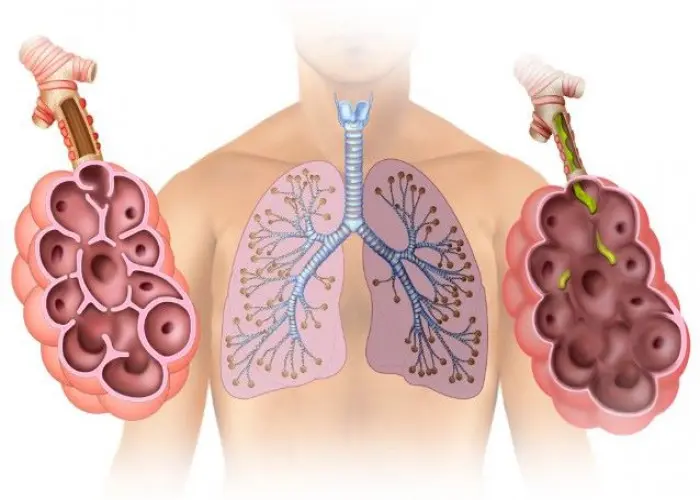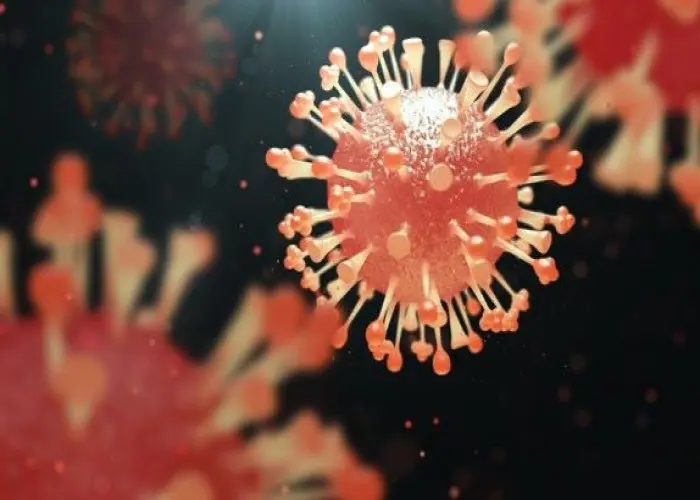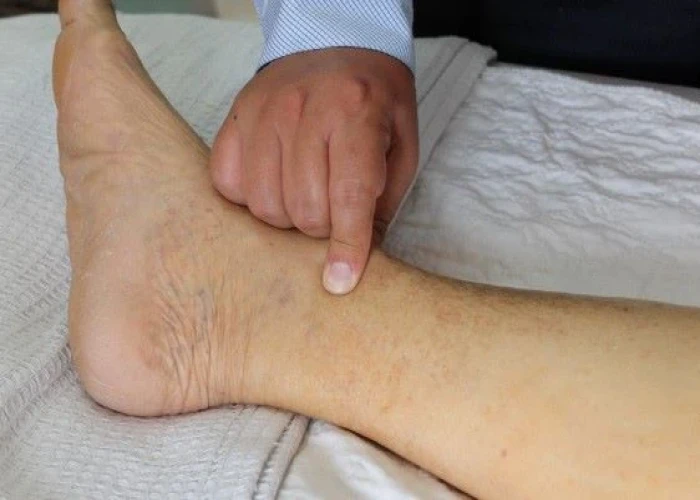 Welcome
Welcome
“May all be happy, may all be healed, may all be at peace and may no one ever suffer."
Pneumothorax

Pneumothorax is a medical condition in which air leaks into the space between the lungs and the chest wall, causing the lung to collapse partially or completely. This can result in difficulty breathing, chest pain, and other respiratory symptoms.
The most common cause of pneumothorax is trauma to the chest, such as a rib fracture or a puncture wound. Other causes may include lung diseases such as chronic obstructive pulmonary disease (COPD) or cystic fibrosis, or medical procedures such as mechanical ventilation or lung biopsy.
Symptoms of pneumothorax may include sudden onset of chest pain, shortness of breath, rapid heart rate, and a feeling of tightness in the chest. In some cases, symptoms may be mild or absent, particularly if the collapse of the lung is small.
Treatment for pneumothorax may involve inserting a needle or chest tube into the chest cavity to remove the air and allow the lung to re-expand. In some cases, surgery may be necessary to repair the lung or prevent future occurrences of pneumothorax.
If you experience sudden onset of chest pain or difficulty breathing, seek medical attention immediately, as these symptoms may indicate a serious medical condition such as pneumothorax. With prompt diagnosis and treatment, most people recover fully from pneumothorax without complications.
Research Papers
Disease Signs and Symptoms
- Shortness of breath (dyspnea)
- Chest pain
Disease Causes
Pneumothorax
A pneumothorax can be caused by:
- Chest injury. Any blunt or penetrating injury to your chest can cause lung collapse. Some injuries may happen during physical assaults or car crashes, while others may inadvertently occur during medical procedures that involve the insertion of a needle into the chest.
- Lung disease. Damaged lung tissue is more likely to collapse. Lung damage can be caused by many types of underlying diseases, such as chronic obstructive pulmonary disease (COPD), cystic fibrosis, lung cancer or pneumonia. Cystic lung diseases, such as lymphangioleiomyomatosis and Birt-Hogg-Dube syndrome, cause round, thin-walled air sacs in the lung tissue that can rupture, resulting in pneumothorax.
- Ruptured air blisters. Small air blisters (blebs) can develop on the top of the lungs. These air blisters sometimes burst — allowing air to leak into the space that surrounds the lungs.
- Mechanical ventilation. A severe type of pneumothorax can occur in people who need mechanical assistance to breathe. The ventilator can create an imbalance of air pressure within the chest. The lung may collapse completely.
Disease Prevents
Disease Treatments
The goal in treating a pneumothorax is to relieve the pressure on your lung, allowing it to re-expand. Depending on the cause of the pneumothorax, a second goal may be to prevent recurrences. The methods for achieving these goals depend on the severity of the lung collapse and sometimes on your overall health.
Treatment options may include observation, needle aspiration, chest tube insertion, nonsurgical repair or surgery. You may receive supplemental oxygen therapy to speed air reabsorption and lung expansion.
Observation
If only a small portion of your lung is collapsed, your doctor may simply monitor your condition with a series of chest X-rays until the excess air is completely absorbed and your lung has re-expanded. This may take several weeks.
Needle aspiration or chest tube insertion
If a larger area of your lung has collapsed, it's likely that a needle or chest tube will be used to remove the excess air.
- Needle aspiration. A hollow needle with a small flexible tube (catheter) is inserted between the ribs into the air-filled space that's pressing on the collapsed lung. Then the doctor removes the needle, attaches a syringe to the catheter and pulls out the excess air. The catheter may be left in for a few hours to ensure the lung is re-expanded and the pneumothorax does not recur.
- Chest tube insertion. A flexible chest tube is inserted into the air-filled space and may be attached to a one-way valve device that continuously removes air from the chest cavity until your lung is re-expanded and healed.
Nonsurgical repair
If a chest tube doesn't re-expand your lung, nonsurgical options to close the air leak may include:
- Using a substance to irritate the tissues around the lung so that they'll stick together and seal any leaks. This can be done through the chest tube, but it may be done during surgery.
- Drawing blood from your arm and placing it into the chest tube. The blood creates a fibrinous patch on the lung (autologous blood patch), sealing the air leak.
- Passing a thin tube (bronchoscope) down your throat and into your lungs to look at your lungs and air passages and placing a one-way valve. The valve allows the lung to re-expand and the air leak to heal.
Surgery
Sometimes surgery may be necessary to close the air leak. In most cases, the surgery can be performed through small incisions, using a tiny fiber-optic camera and narrow, long-handled surgical tools. The surgeon will look for the leaking area or ruptured air blister and close it off.
Rarely, the surgeon will have to make a larger incision between the ribs to get better access to multiple or larger air leaks.
Ongoing care
You may need to avoid certain activities that put extra pressure on your lungs for a time after your pneumothorax heals. Examples include flying, scuba diving or playing a wind instrument. Talk to your doctor about the type and length of your activity restrictions. Keep follow-up appointments with your doctor to monitor your healing.
Disease Diagnoses
Disease Allopathic Generics
Disease Ayurvedic Generics
Disease Homeopathic Generics
Disease yoga
Pneumothorax and Learn More about Diseases

Hip dysplasia

Emphysema

Influenza (flu)

Adrenoleukodystrophy

Nephrotic syndrome

Hantavirus pulmonary syndrome

Proctitis

Posterior cortical atrophy
pneumothorax, নিউমোথোরাক্স
To be happy, beautiful, healthy, wealthy, hale and long-lived stay with DM3S.
